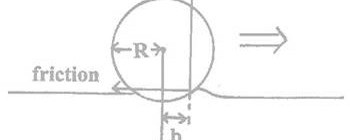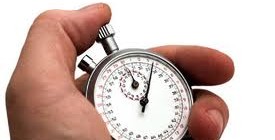I am always amazed talking to players, I mean elite players, when they reject the idea of AimPoint to help their putting. Recently, I had a top college player in my office and he wanted help making more putts. He was not winning and was not really competitive despite unreal ball-striking and power tee to green. His problem was simple – “I can’t seem to make those birdie putts inside 20 feet unless I hit it really, really close.” Unfortunately, this is a common problem for the players that I work with.
I had this player hit a few putts and go through his putting progressions. For me, when I evaluate a player, I look at three main things – Read, Stroke, and Commitment. Since I am not a golf professional or club-fitter, each of the three has an impact mentally. For Read, it is important that they know where the putt is going and truly believe it. If they don’t know how the putt is going to break, it opens up doubt and stroke manipulations. Stroke is there because they have to believe that their stroke has been prepared, practiced, and is tested to perform under pressure. Anything less will simply impact their Commitment. When you know the read and know you have done the work on your stroke, all there is left to do is let go and commit. Simple formula really, except, the Read always seems to break the process down.
So when I asked this player about his read, his answer was comical – “I am not really good at reading greens so I just guess. I usually can tell if it is going right or left.” Remember, this is a GOOD player. I just laughed and didn’t care if he was upset by my reaction. Can you imagine a pitcher saying that he has no idea where his pitches are going, so he just throws? Or a surgeon telling a patient that s/he will find out what is really going on when they open you up?
Guessing does not work in golf
The solution was easy, I thought – AimPoint. I suggested the player take a class on AimPoint as soon as possible. You would have thought I told him that he should start putting left handed (although I think he would have done that sooner). He said that either you know how to read greens or you don’t and he can usually figure it out. That was completely contradictory to his earlier comment.
So I asked him what he knew about AimPoint, and these were the general myths he actually said:
1. Grain doesn’t matter to AimPoint but in the south, we have grain (AimPoint was developed in Florida on Bermudagrass)
2. It is better for female players and that is why you see it on the LPGA (I had no idea what to say about this one)
3. It doesn’t work for players that like to be aggressive on putting speeds (it can be adjusted for any putt speed you choose)
4. The chart is a sign of a player that does not know how to read greens (even the most experienced AimPointers still use the chart)
5. When I turn pro, my caddie will have all the greens charted so he can do it then (don’t count on it)
6. And, his coach would not allow him to use a system that is not USGA approved (AimPoint is allowed by both the USGA and R&A)
So, here is the clincher – the top player on the team is an AimPointer! I asked him who the best putter on the team was and he quickly acknowledged it. Ok, so now that I have your attention and your likely agreement with your own experiences, let me give you some psychological insight into the resistance to players adopting AimPoint.
Pride
It is a powerful five-letter word, but in order to adopt a new green reading system, you have to admit that you are not as astute as you think you are. You would think that a player that switches drivers on the fly would adopt a strategy to learn everything they could about the greens. But new drivers and club technology add length and accuracy, both ego-driven aspects of the game. Pride has derailed many players over the years.
So, how do you get people to adopt something new when their pride is on the line? Ask them questions. Lots of them and they will eventually answer their own questions. For instance, with this player, I started asking him about great putters that he wanted to emulate. What characteristics would they like to steal, what would they like to feel like over the ball, and how he felt he could make more putts? He kept coming back to things that AimPoint covered.
I asked him how it felt to step over a putt and question the read and doubt the putt going in? It was a simple but direct question. At this point, his defenses were down and the timing was right. His answer was easy – When is the next AimPoint class? He completed his class two weeks later and is now learning to incorporate into his play. He has turned professional and is working through the stages of learning and trusting it in competition. His pride is now being drawn from making putts and knowing that when he leaves the green, every putt has a chance to go in.
So, ask open-ended questions and you will find their defensiveness and resistance. That will allow you to navigate the waters to bring them to the promised land.
Bhrett McCabe, PhD
The MindSide, LLC
www.bhrettmccabe.com


























